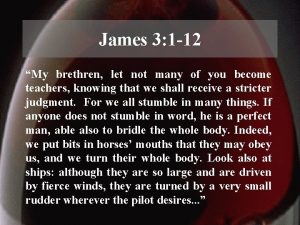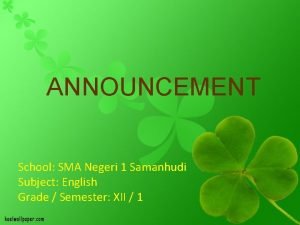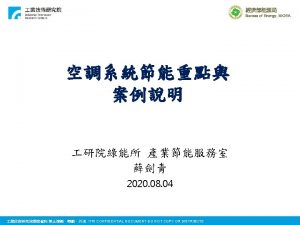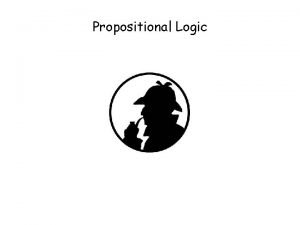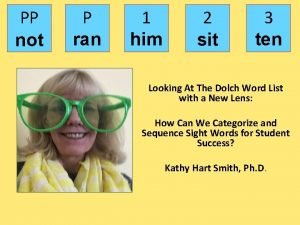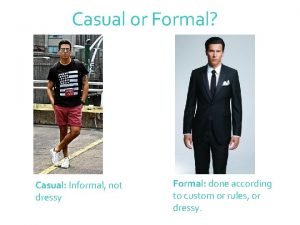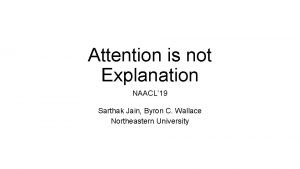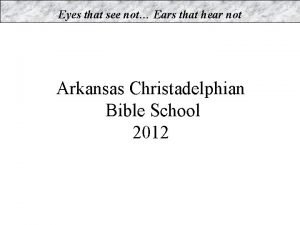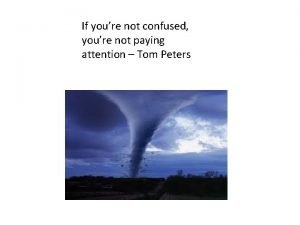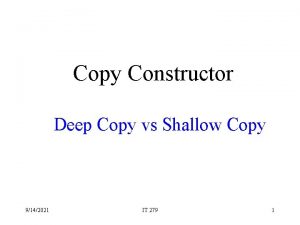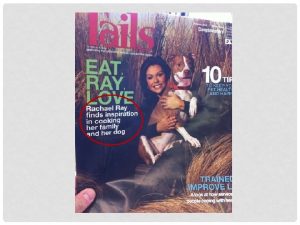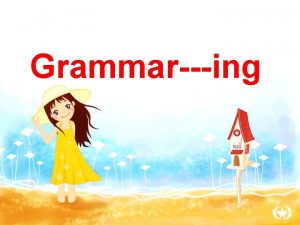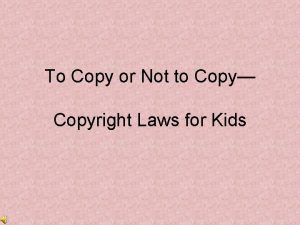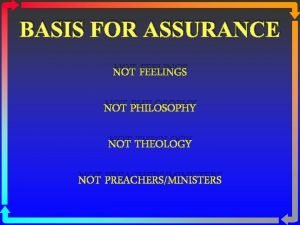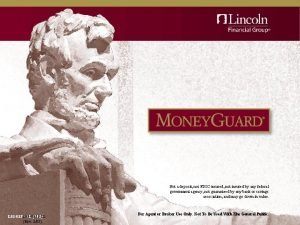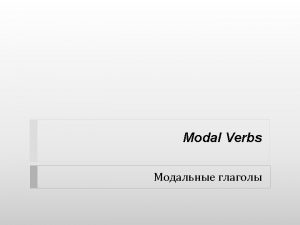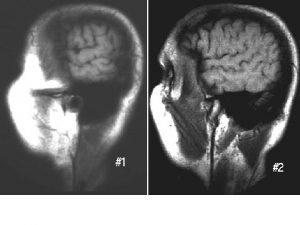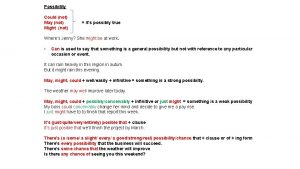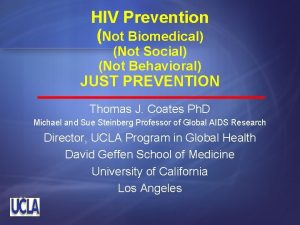To Copy or Not to Copy A Teachers

















- Slides: 17

To Copy or Not to Copy A Teachers Guide to the Copyright Act

What is the purpose of the copyright law? The US Constitution states the purpose of the copyright law is “to promote the progress of Science and useful Arts”

A clear understanding of the copyright law is essential for educators!

What is copyright infringement? Infringement occurs when copyrighted material is accessed and created into another work that is similar in nature to the original. Violating the originators right to reproduction, distribution, adaptation, performance and public display.

What works are protected by copyright? Literary Works Musical Works; including words Dramatic Works; including music Pantomimes & Choreographic Works Pictorial, Graphic & Sculptural Works Motion Pictures & other Audio Visual Works Architectural Works

Why do we have a copyright law? The supreme court has stated that the purpose of copyright is necessary to enhance society by “protecting the progress of Science and Useful Arts”.

What is Fair Use? Fair use is a legal defense that allows a person other than the owner to use copyrighted material in a reasonable manner without prior consent. This does not give educators free rein.

How do we determine Fair Use? The acronym PANE is used to determine Fair Use. P = Purpose of use A = Amount of work used N = Nature of work used E = Effect of the work used on the potential market value

There are Classroom Guidelines for Fair Use. These guidelines are not the law. This is known as Safe Harbor. This does not allow educators free reign.

What can be copied according to Classroom Guidelines? Utilization of the PANE acronym is important here. P = purpose of use – must have curricular value A = amount of work used – 1 piece per student. This does not allow you to make replacement copies or a copy to archive. N = nature of the work used – does this correlate? Does this work directly impact our subject matter? E = Will this use effect the original copyright holder?

Example 1 : Teacher uses a popular song to introduce a unit. Up to 10% of the song may be reproduced and used as part of a multimedia presentation by an educator. P = used to introduce unit. A = whole song N = song does not directly correlate to material being taught. E = this would be defrauding the original artist of the public performance right to this song. This use would not be allowed under the copyright law.

Example 2: Teacher would like to copy a single use piece of software to allow other students to use at a computer center. Computer software is sold one of two ways. Single use license = 1 program per user. Network license = multiple users allowed to use on single. Copying is allowed for archival purposes only. Administer the PANE test: P= multiple users A= 3 copies made and used in center N= provides curricular practice E= preventing original holder of additional copies This use would not be allowed under the copyright law.

Example 3: Student creates a Power. Point with many visual clips. Presentation is very appealing, but most of the images have been copied and pasted from web sites. All images have been sited in a work sited slide at the end of the presentation Most works on the internet are copyrighted. Images maybe used for student projects and teacher lessons. P= student produced presentation A= at least one visual per slide N= to augment presentation E= no effect on original copyright holder This would be the correct use of images according to the Classroom Guidelines. All works are cited and credit is applied.

Example #4: A Social Studies teacher records the Presidential inauguration to show to her class the next day, but she would like to keep this copy for future use because of it’s historical value. Video copied presentations are allowed with in 10 days of the original broadcast. After 10 days the must be destroyed. P= correlates to the Social Studies lesson A= the whole day of inauguration festivities. N= practical application of Social Studies lesson. E = archiving this video does not allow the originator right to reproduction This use would not be allowed under the copyright law.

Example 5: Teacher is doing a lesson on poetry. She makes 1 copy of a poem for each student in her class and one for her lesson plans from an anthology. The students use this copy to make notes as to the style of the poem. The copyright information is included on the first page of the handout. P = lesson on poetry copy taken from an anthology. A = 1 copy per student and teacher N = poem taken from anthology to use for classroom assignment E = this poem has no copyright – public domain. This would be the correct use of the poem according to the Classroom Guidelines. All works are cited and credit is given.

Important Reminder!!!!! As a standard rule of thumb, do not copy any part of a consumable book. These books (workbooks) are intended for single use only. The copyright holder does not allow for copies to be made under any circumstances.

Work Cited “Copyright and Fair Use Guidelines for. Teachers. ” Hall Davidson. 8 Oct. 2002. Technology & Learning. 23 Jan. 2009 <http: //www. halldavidson. com/copyright_chart. pdf>. Torrans, Lee Ann. Law for K-12 Libraries and Librarians. Westport: Libraries Unlimited, 2003
 Kim kroll
Kim kroll Uncontrolled, lacking in restraint
Uncontrolled, lacking in restraint Let not many of you become teachers
Let not many of you become teachers He and she ___ not pay attention of teachers announcement
He and she ___ not pay attention of teachers announcement Blancco oy
Blancco oy Do not copy
Do not copy If p then not q truth table
If p then not q truth table If you don't measure it you can't manage it
If you don't measure it you can't manage it P ran
P ran Casual and informal
Casual and informal Not too big not too small just right
Not too big not too small just right We will not be moved you're standing with us
We will not be moved you're standing with us Attention is not not explanation
Attention is not not explanation Love is not all you need
Love is not all you need Not a rustling leaf, not a bird in flight
Not a rustling leaf, not a bird in flight Too broad too narrow
Too broad too narrow Eyes that see not ears that hear not
Eyes that see not ears that hear not If you are not confused you're not paying attention
If you are not confused you're not paying attention


